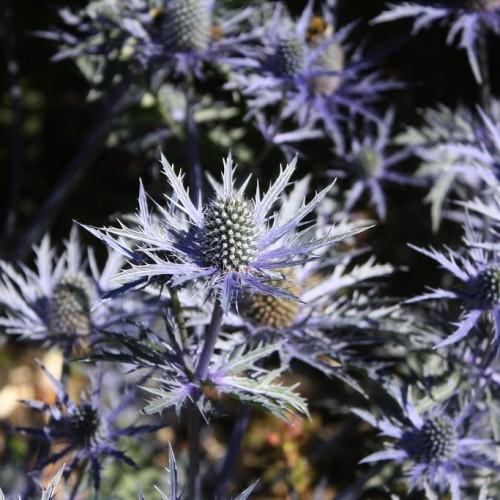
sea holly
Eryngium 'Sapphire Blue'
Cycle:
Herbaceous Perennial
Watering:
Minimum
Hardiness Zone:
5 - 9
Flowers:
Flowers
Sun:
Full sun
Growth Rate:
Low
Maintenance:
Low
Drought Tolerant:
Yes
Salt Tolerant:
Yes
Thorny:
Yes
Care Level:
Moderate
watering
Sea holly is a drought-tolerant plant, so it does not require a lot of water. During summer months it should be watered about twice a week with enough water to penetrate the soil and reach the roots. If the soil feels dry, it is probably time to water. During winter months, water only when the soil appears nearly dry, about once every 10-14 days. Sea holly prefers well-drained soils, so it's best to avoid overwatering.
sunlight
Sea Holly (Eryngium 'Sapphire Blue') needs full sun to partial shade and should receive about 6 hours of direct sunlight per day. The plant thrives best when planted in well-drained soil and should not be subject to standing water. Sea holly should be watered regularly, but allow the soil to dry out slightly between watering, especially during winter months.
pruning
Sea holly (Eryngium 'Sapphire Blue') should be pruned once a year in late winter or early spring when the plant is dormant. Pruning should be done to keep its bushy growth habit, remove dead or withered leaves, and remove flower spikes that have died after blooming. Start by removing any dead or withered leaves and flower stems. Then, prune the stems of healthy leaves and flower spikes to promote bushier, more compact growth. Work your way from the tips down to the base of the stem. If there are any shoots that are extremely long, try to shorten them by around a third, to make the plant look more uniform. Try to use sharp, clean pruning shears so as not to damage the plant.
